Moles are congenital or acquired formations on the skin. In medicine they are called nevi. If you notice their presence, there is no need to sound the alarm. It is enough just to go to a medical facility to check moles once a year. The specialist will be able to notice any changes and diagnose the disease, if any. How are moles checked? How is oncology detected? We will talk about this in our article.

Causes for concern
Every person has moles on their body, and they can be large or small, flat or convex, smooth or grainy, dark or light. It is not necessary to examine every spot very carefully and scrupulously, but you need to monitor whether the nevus changes over time. Particular attention is paid to those spots that are located in the groin area and under the chest.
But why monitor the condition of your mole? The fact is that even the smallest spots on the body under the influence of ultraviolet rays or other factors can develop into a malignant tumor. That is why those people who have lighter skin and a lot of nevi on their bodies should avoid direct sunlight, as well as tanning in a solarium. In addition, a simple injury to a birthmark can lead to serious consequences. Before answering the question of how moles are checked for a malignant form, it is necessary to understand their main varieties.
Types of birthmarks
The main types of moles include:
- Vascular. They appear due to too rapid growth of skin capillaries.
- Pigmented. They appear due to the fact that the body produces too much melanin pigment.
Another classification:
- Congenital. The baby is born with them.
- Acquired spots, which depend on the patient’s genetics, skin type, and sun exposure.
In addition, there are nevi, the entire plane of which is located on the skin, and hanging ones, that is, on a stalk.

How to check moles
There is a simple, very interesting method that allows you to check your nevus for a malignant form. You just need to remember one word "chord", in which each letter has its own meaning.
- "A" stands for asymmetry. If your nevus is uneven and asymmetrical, then this may be a sign of a malignant form of formation.
- "K" means edge. If a birthmark has torn and uneven borders, then this is also a sign of malignancy.
- Another "K" is for the bleeding of a mole.
- “O” in this case implies the color of the formation. If the nevus changes shade, or spots or stripes of different colors have formed on it, then this is a cause for concern.
- "P" is the size of the mole. Large tumors have more prerequisites for malignant degeneration.
- "D" implies dynamics. If the spot has increased in size, cracks or crusts have appeared, you should immediately consult a doctor.
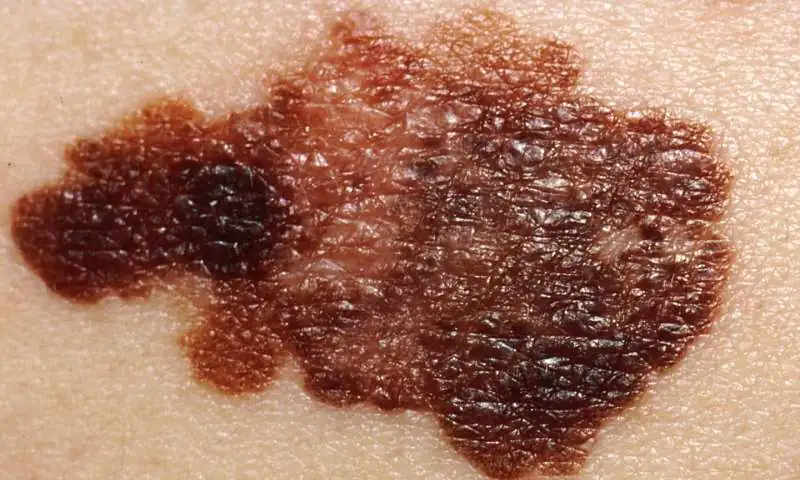
Alarming symptoms
We continue to look at how moles are checked for a malignant form. If the spot begins to degenerate, change color, become lighter or darker, then this is a very alarming symptom. In addition, if a mole has increased by 5 mm in diameter over a couple of months, this indicates a malignant transformation.
If severe pain occurs during a birthmark injury, this is also a serious symptom. Despite all the dangerous symptoms described above, it should be noted that only a qualified specialist can check a mole for cancer. Under no circumstances should you self-diagnose at home or carry out self-treatment.
Precautionary measures
In case of injury to the formation, the doctor may prescribe the patient to remove the mole. This can be done using a laser, liquid nitrogen, or simple surgery. As a rule, after such manipulation the material is sent to the laboratory for histological examination. This is the most accurate diagnostic method.
Where to check a mole for cancer? Only in the hospital. As a rule, these are oncology centers where the birthmark was removed. It should be said that histology can only be carried out if the doctor has biological material. When a mole is burned out with a laser or liquid nitrogen, as a rule, no mole remains.
You should know that the development of skin cancer can be prevented by avoiding direct sunlight. If you go to the beach, it is best to do this in the morning, as well as in the evening after 4 o'clock. It is necessary to use sunscreen. Also bring hats and sunglasses. Whenever possible, you should wear cotton clothing in summer. Despite the fact that the heredity factor in this case is of great importance, the likelihood of developing cancer can be reduced if you follow these simple tips.
Diagnostics
If you want to check your skin for cancer, you need to perform a dermatoscopy. Which doctor checks moles? As a rule, this is done by a dermatologist. During diagnosis, he examines the skin through a special magnifying glass, after which he records the dimensions and changes. If this examination is not enough, the specialist will prescribe tests that the patient must undergo. If deviations from the norm are detected, the tumors are removed simply surgically or using cryotherapy.
Many people are also interested in where to get moles checked. Currently, similar procedures are carried out in almost all public hospitals.
Dermatoscopy is performed if there are several moles on the body located on light skin. This procedure is also carried out if the patient has damaged his tumor, if the number of growths has begun to increase sharply, or if unpleasant sensations have appeared in the place where the nevus is located.
Other research methods
There are many hospitals that check moles. In Moscow, as well as in other large cities of Russia, there are a large number of paid clinics dealing with oncological issues. If, after visiting such an institution, a specialist diagnoses a malignant disease, then it is necessary to identify its form, as well as prevent rapid spread. To do this, a chest x-ray is taken, liver function is checked, and a biochemical blood test is taken.
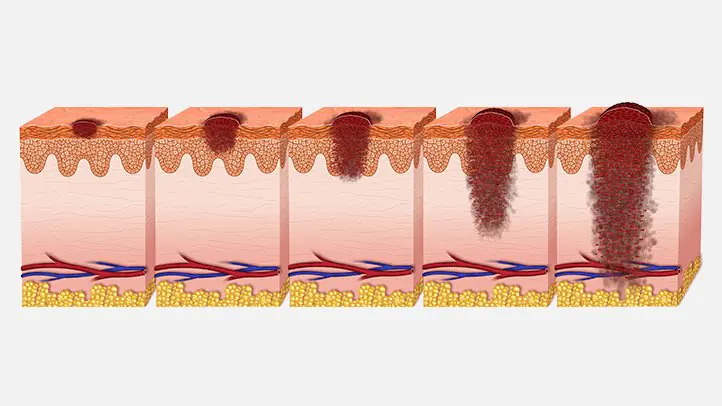
Self-examination - is it possible or not?
We have figured out where to check a mole for a child and an adult. However, you should pay attention to the fact that the procedure can be carried out at home. However, after it, you still need to go and have the mole checked by a dermatologist in order to be sure of the presence or absence of a malignant form.
A birthmark that can degenerate into a cancerous formation is detected by the signs that were described above. You can monitor its dynamics on your own, but you cannot treat it at home.
Which specialists examine
If symptoms of a malignant mole appear or if melanoma is suspected, you should seek help from a specialist. We answered above that most often people turn to a dermatologist with this problem. If your clinic has a dermato-oncologist, it is best to contact him. This is a doctor who specializes specifically in skin cancer. In most cases, such specialists are seen in large cancer centers. Unfortunately, they are not available in all localities. If you live in a metropolis, then you can check a mole for your child or yourself with a dermato-oncologist.
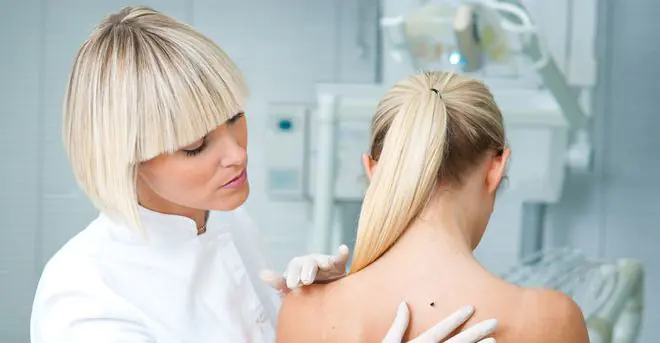
Some clinics or specialized institutions have general oncologists. Most often, such hospitals also have their own histological laboratories, so the biomaterial will be examined right on the spot.
As for dermatologists, they do not specialize in melanoma, but they know everything about various skin diseases. This doctor is able to accurately distinguish a harmless nevus from a malignant melanoma, and then give the patient further recommendations.
Addresses of clinics in the capital
Where to check moles in Moscow? Best clinics:
- Russian Oncology Research Center named after. N.N. Blokhina: Kashirskoe highway, 23.

- Yusupov Hospital: Nagornaya street, 17, bldg. 6.
- European Clinic: Dukhovskoy Lane, 22 B.
- Clinic of Oncoimmunology and Cytokine Therapy: st. Stroiteley, 7, bldg. 1.
- Moscow Scientific Research Oncological Institute (MNIOI) named after. P.A. Herzen: 2nd Botkinsky proezd, 3.
Risk factors
There are several factors that influence the increase in the likelihood of a harmless mole degenerating into melanoma. These include:
- Too pale skin.
- The areas of the skin where the mole is located are not protected from exposure to ultraviolet radiation (hands, face).
- Relatives have or have had melanoma.
- Too many moles on the patient’s body.
- Elderly age.
- Male gender.
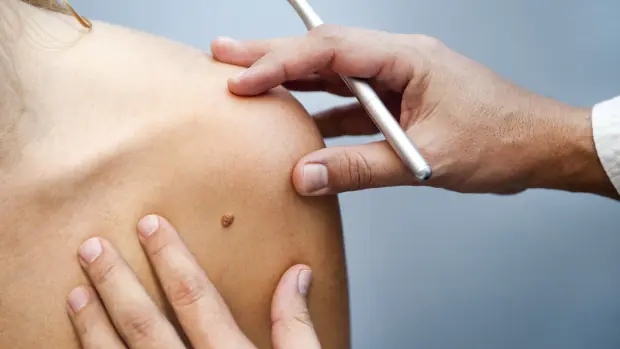
Possible consequences
If you do not consult a doctor when the first signs of malignant melanoma appear, this can provoke very unpleasant consequences, even death. Some people consider skin cancer not very dangerous, since they are sure that it is never too late to cut out melanoma. However, this disease is very insidious. It almost always metastasizes, meaning cancer can start anywhere in the body. This is precisely why melanomas are dangerous.
If you want to get reliable results, then you must also undergo examination by an immunologist, endocrinologist and other specialized specialists. Damage to the skin may indicate the development of diabetes. If the tumor is located near the eye, then in this case an ophthalmologist will help you. An immunologist determines how a person’s immune system works. If it is strong enough, it can inhibit the growth of cancer cells for some time.
To avoid various kinds of complications, it is necessary to carry out prevention. To do this, experts recommend removing moles that rise above the skin, as well as those that change color or become damaged.
Patient opinions
Feedback from patients suggests that they can be left alone if they do not change over time and do not cause any problems. Both doctors and patients advise removing formations if a mole suddenly begins to change its shape, color, or size. You also need to get rid of pigmented formations that are located in places on the body where they are constantly exposed to injury or create psychological discomfort.
In beauty salons, nevi are simply removed, but are not checked for histology. To conduct such a study, you need to contact a medical institution. In reviews, people write that the mole removal procedure is absolutely painless.
The appearance and degeneration of moles is fraught with many mysteries. But don't be afraid of it. Their number and size on the body are different. No two birthmarks are exactly alike. The first nevi appear at birth, the number on the body increases with age.
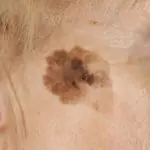
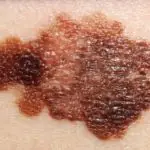
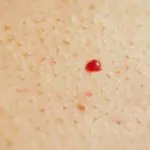
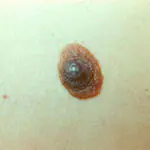
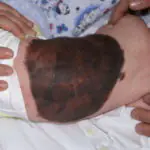
When should you visit a specialist?
The reasons for contacting a specialist about a nevus or mole can be different:
- cosmetic defects;
- discomfort in everyday life;
- unpleasant symptoms of degeneration into melanoma.
Mandatory reasons for visiting a doctor should be:
- changes in nevus parameters;
- number of moles;
- their noticeable increase over the last period;
- change in the outline of a mole;
- discharge of fluid or blood from the spot.
Symptoms of degeneration
Everyone needs to know them in order to promptly notice the transformation of an ordinary mole into melanoma:
- The color of the mole has noticeably changed. They may become lighter, darker, or even blacken;
- Different shades appeared on the mole, signs of peeling;
- The boundaries of the tumor have become unclear, spread out, the skin around may turn red. Before this, the flat spot becomes noticeably convex and rises above the surface of the skin. This is an alarming signal of the beginning of the inflammation process;
- Formations in the form of nodules or crusts appeared on the spot;
- Unpleasant sensations appeared at the place of rebirth:
- peeling;
- itching;
- pain;
- tingling;
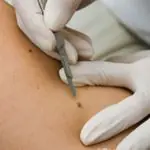
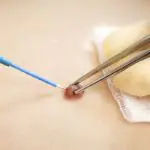
Can the problem be solved by a cosmetologist?
You should contact a cosmetologist about a mole only if you need to properly disguise it.
Doctors name reasons why it is not advisable for cosmetologists to treat and examine nevi:
- A qualitative diagnosis of a suspicious birthmark can only be carried out by a doctor, but not by a cosmetologist. It is not the responsibility of cosmetologists to do their research;
- Often cosmetologists do not have special medical education, so they do not have the right to prescribe treatment;
- If a mole enlarges or other parameters change, it should not be masked; this is a reason to seek help from a dermatologist, surgeon or oncologist.
FAQ
Who should I contact to remove a large birthmark?
Who should I show the spot on my child’s face?
Who should I contact if a mole itches?
If a mole itches, then the first visit should be made to a dermatologist, who will examine it and indicate further actions: additional examination, treatment or procedures.
The doctor will determine:
- Is itching the cause of developing melanoma?, during this period, active division of melanocytes occurs;
- or the cause is external factors:
- tight clothes;
- frequent exposure to the sun;
- allergic reactions to powder after using cosmetics or household chemicals;
- hormonal surge;
- lack of vitamins.
Prevention measures
To slow down the process of their appearance or reduce the risk of degeneration, you should adhere to the following recommendations:
- In summer, avoid being in direct sunlight from 10.30 to 17.00;
- Remember about the accompanying factors that can provoke a double effect of skin absorption of ultraviolet radiation - water, sand, snow;
- Remember that even the most expensive sunscreens do not provide 100% protection from solar radiation;
- Avoid or significantly reduce your time in the solarium. This is especially true for people over 35 years of age;
- Make sure that they are not subject to mechanical damage or friction.
Conclusion
All people have birthmarks on their bodies, some appear at birth, some appear throughout life. This is genetically determined.
Doctors do not recommend panicking after the appearance of new moles or the beginning of their changes. But it is imperative to monitor changes in their size, density, and color.
Every person can have from a few to several dozen moles on their body. This phenomenon is not dangerous and does not require medical intervention. Except for those cases when nevi change their color, size, structure and cause physical pain to a person. If one of these symptoms occurs, you need to find out which doctor to see for your moles.
Which doctor should I go to with moles?
A mole is a benign formation that consists of cells capable of accumulating melanin. The color of the nevus depends on the amount of melanin in the formation cells. But under the influence of unfavorable factors, there may be a risk of degeneration of education.
If a person has the correct information about which doctor to show the mole to, he will be able to visit the necessary specialist in time, who will conduct an examination and consultation. This will help detect an unfavorable process before it reaches a more dangerous stage, as well as reduce the risk of complications for the body.
Dermatologist
If the question arises, which doctor checks moles, it is a dermatologist. He diagnoses and treats skin diseases that appear in an adult. If a child has a birthmark, it should be shown to a pediatric dermatologist. Since birthmarks are located on the skin, if suspicious signs appear, it is recommended to consult a dermatologist.
If the situation requires it, a nevus specialist can prescribe more than one examination method so that the diagnosis can be confirmed in several ways. If the nevus does not pose a threat to health and does not need to be removed, the dermatologist will prescribe medications to relieve the patient of the problem. However, if the doctor suspects that the formation may be malignant, he will refer the person to be examined by an oncologist, surgeon, or oncodermatologist.
Surgeon
If a person has been examined by a dermatologist and given a diagnosis that requires surgical intervention, then he then needs to visit a surgeon. He specializes in tumor removal. After the operation is scheduled, the person is recommended to prepare for surgery.
This process can take several hours or several days. The period of time depends on the condition of the nevus or how many operations the doctor has. The procedure for removing a birthmark that has begun to hurt, grow or change color lasts several minutes. In this case, the person will experience no pain. The only caveat is the high cost of the procedure.
The operation is performed using a laser. The action of the laser is aimed at drying the nevus and further destroying viral and cancer cells. High temperature helps achieve this result. In less than an hour, a person will get rid of his problem and will not worry about the health consequences.
The surgeon may suggest a cheaper method for removing the nevus. It involves using a regular scalpel. The only disadvantage is the scar that a person will have after the operation. Read the recommendations: Scar after mole removal: effective ways to remove the scar.
Oncologist
If a person’s nevus begins to enlarge, turn black or hurt, the question is which doctor to show such a mole to. An oncologist specializes in cancer diseases of various parts of the body. When it comes to malignant moles, you should contact an oncodermatologist. His specialization is in skin cancers. If a pathological birthmark is located on a woman’s chest, she should seek help from a mammologist oncologist, he is a specialist in birthmarks with this localization.
When referred for a consultation with an oncologist, a person needs to be examined. To clarify the diagnosis, the doctor will refer him for a biopsy or histology. If it is confirmed that the nevus has degenerated into a malignant formation, the patient will be prescribed a procedure to remove such a nevus. The oncologist will advise which doctor removes moles.
Cosmetologist
There are opinions from people that if a hanging growth is located in a place such as the face, intimate area, you should contact a cosmetologist. This opinion is wrong. A cosmetologist is not one of the doctors who understands growths on the human body. Moreover, he cannot carry out any interventions on the birthmark. A cosmetologist is able to advise a person on how to care for benign formations.
If a person has scratched or torn off a birthmark, it is recommended that he be checked in a medical facility, but not by a cosmetologist. A doctor of this profile will not conduct a proper examination and will not make the necessary diagnosis. To determine what a nevus consists of, whether it is dangerous or not, you should go to the hospital and see a qualified specialist.
How is diagnosis done?
To make an accurate diagnosis, a mole doctor uses the following methods:
- Biopsy. This diagnostic method is used if there is a suspicion that the formation is malignant. Using forceps, a small part is torn off from the nevus. The separated piece is placed in a special container and sent for thorough examination in the laboratory.
- Dermatoscopy. This diagnostic method uses a dermatoscope. First of all, the doctor smears the birthmark with the necessary solution. Then he examines the nevus with a dermatoscope.
- Computer diagnostics. This method involves examining the formation using a digital video camera, which is equipped with good resolution. With a thorough examination of the disturbing spot, the doctor is able to determine what changes are occurring in the nevus.
- Histology. This method consists of taking a sample of mole tissue and transporting it to a laboratory where it will be tested for the presence of cancer cells.
First, the doctor will find out how long ago the changes in the formation have been occurring, then examine the place where the inflammatory process is occurring, and then prescribe an additional examination, which consists of a general blood test and an analysis for the presence of the papilloma virus. The doctor will make a diagnosis after receiving the results of all tests. Based on the diagnosis, you can choose an effective and safe method of treating the birthmark.
Which doctor should I show a child's mole to?
If a small child has a mole on his body that is growing, the therapist will tell you which doctor to go to. Such a doctor is universal. After personally examining the growth in the child, he will determine which specialist to next refer the patient to. Often a referral is made to a pediatric dermatologist.
When visiting a dermatologist, the child will be examined again, a dermatoscopy procedure will be performed, on the basis of which a decision will be made whether the formation in a small child needs to be removed, or whether it can be left alone and drug treatment can be resorted to. Checking with a dermatoscope is a painless procedure. The advantage of this diagnostic method is the identification of early stages of cancer that can be treated.
If examination with a dermatoscope shows that the formation is malignant and should be removed, the pediatric dermatologist will explain the name of the doctor for moles that need to be removed. The surgeon will be able to study the results of the analysis and suggest removing the child’s mole in a more effective and safe way. After choosing an acceptable method, the child will undergo a procedure to remove the nevus.
Cost of consultation and examination of problematic moles
The average cost of a consultation with a doctor specializing in moles in both adults and children in the Russian Federation ranges from 300 to 800 rubles. Based on the results of consultation and examination, it may be necessary to remove it. The formations can be located in different parts of the body, and the cost will depend on this factor. Namely:
- On the face and neck – from 1000 rub. up to 1850 rub.
- On arms and legs – 750–1200 rub.
- If the moles are large - from 3000 rubles. up to 4300 rub. (for removal of one nevus).
- Removal of a large number of small nevi in one procedure - from 450 rubles. up to 700 rub.
">



